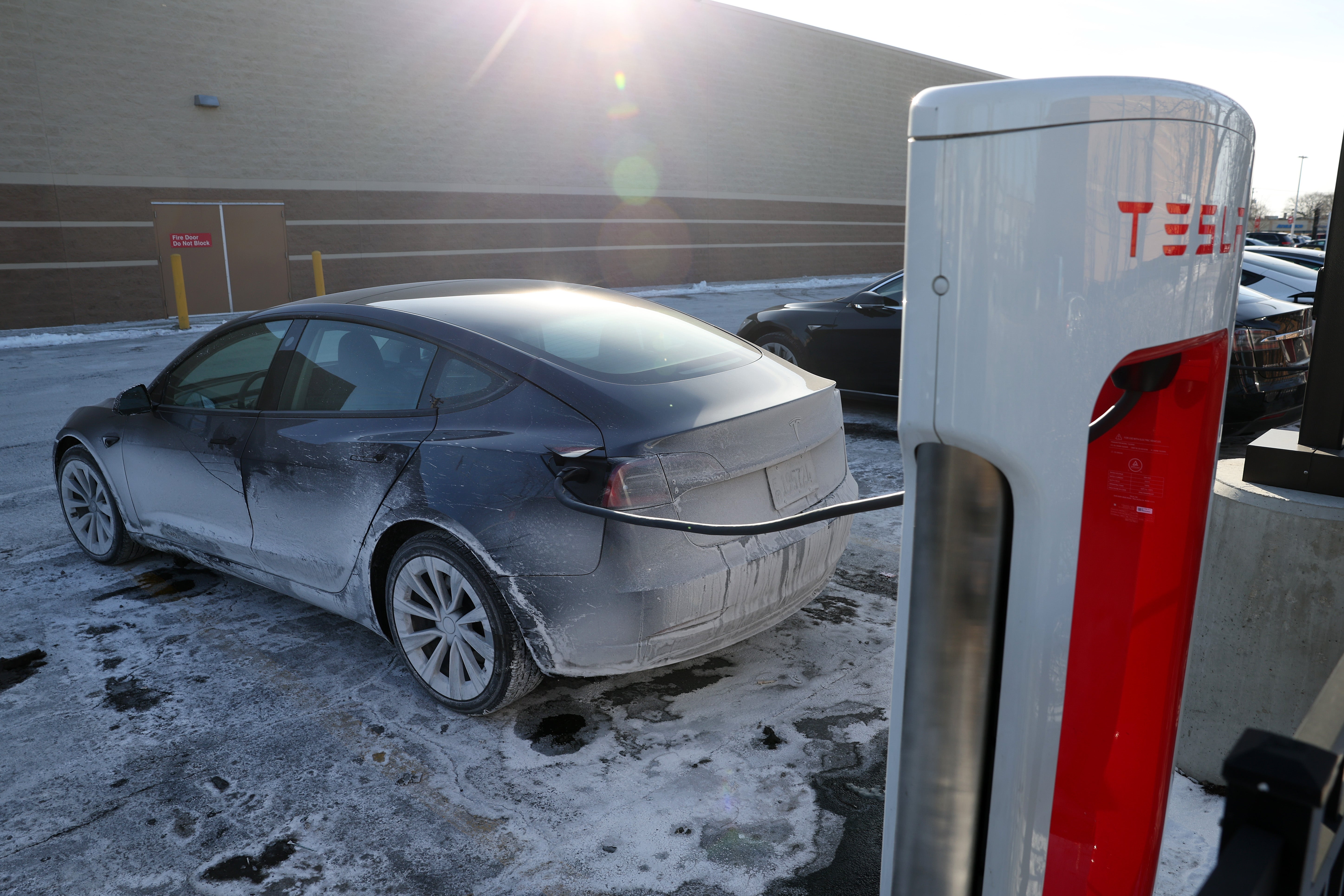Battery breakthrough that could slash price of electric cars
The US is aiming for at least half of new vehicle sales to be electric by 2030
The recent Arctic blasts across the United States left some electric vehicle (EV) owners in a jam.
Fast-draining batteries, slow charging, long queues, and cars being towed after running out of power were reported from Illinois and Michigan to Texas.
Sub-zero temperatures aren’t great for EV battery life - neither, of course, are they for gasoline-powered cars which more frequently break down in freezing conditions. New research from a Norwegian breakdown service revealed that electric cars fail less in extreme cold than fossil fuel-powered vehicles.
Nevertheless, concerns about the range and longevity of EV lithium-ion batteries remain a sticking point for sales.

An Ipsos study last year found that along with the cost, the barrier for many people in buying an EV was concern about the lack of charging stations and battery life.
The findings signal a spanner in the works of US climate plans. More than a quarter of the country’s greenhouse gas emissions come from transportation and to that end, the Biden administration is aiming for at least half of new vehicle sales to be electric by 2030. EVs currently make up about 9 per cent of new US vehicle sales, according to industry tracker EV Hub.
But a recent breakthrough by a team of scientists at Harvard University could help overcome these hurdles. Researchers from the School of Engineering and Applied Sciences (SEAS) reported earlier this month that they have developed a new “solid-state” battery that can be charged in the time that it takes to fill up a tank of gas - and repeated at least 6,000 times.
At the moment, EVs, laptops and other electronics that need energy storage, typically use lithium-ion batteries in a flat, compact “pouch cell” design.
But the power of lithium-ion batteries, as demonstrated, can only take larger machines so far. There has also been evidence of these types of batteries catching fire.
Last June, four people died after a lithium-ion battery caught fire in an e-bike store in New York and spread to apartments above. In December, a fire broke out on a cargo ship carrying nearly 2,000 tons of lithium-ion batteries off Alaska’s coast.
The race to develop solid-state batteries has ramped up in the past few years as the technology is widely considered essential to spurring a nationwide switch from gas-powered cars to electric. Companies including Volkswagen and Toyota have been working on their own solid-state batteries, aiming to get them into vehicles by the end of the decade.
Dr Xin Li, associate professor of materials science at Harvard, described solid-state batteries as “the holy grail”.
While they look similar to lithium-ion models on the outside, solid-state batteries replace the liquid, organic electrolyte with a material like a high-tech ceramic.
“This conducts better than liquid, and it’s non-flammable so it’s safer,” Dr Xin Li told The Independent.
The Harvard team’s postage stamp-sized battery retained 80 per cent capacity after 6,000 cycles, and showed good performance at low temperatures.
It outperforms other solid-state batteries on the market today, the scientists said, after they discovered a new way to make it with a lithium metal anode, which has ten times the capacity of the typical, commercial graphite anodes.
With their new multilayer, multi-material design, the Harvard scientists were able to overcome the major challenge of “dendrites”- root-like structures which grow from the surface of the anode into the electrolyte and can pierce the barrier separating the opposing cathode, leading the battery to short, or worse, catch fire.
The long battery lifetime - equivalent to 30 years - could dramatically reduce the cost of an EV.
“If the consumer spends less money to buy an EV that will really drive global electrification,” Dr Li said.
The ability to charge the battery in a matter of minutes also means that it has very high power density, increasing the possibilities for its use.
“It’s not just electrical vehicles, it could be electric planes which need a lot of power to take off,” he added.
Dr Li began working on solid-state batteries in earnest when he started at Harvard in 2015 after stints at MIT, Cal Tech, Penn State, and Nanjing University in China. “I had several dozen projects in parallel but after a couple of years, I realized the potential of solid-state battery, and I focused more on it,” he said.
In 2021, he and Harvard colleagues created a company, Adden Energy, to license and scale up the technology. A US car company has already tested their solid-state battery and found it to have the same positive results as in their internal testing, Dr Li said.
“A few other car companies are in the pipeline to test our batteries,” he added.
The US government’s Bipartisan Infrastructure Law has dedicated $6bn to building out the domestic industry in battery materials, manufacturing and storage as the world rapidly shifts from fossil fuels to electrification.
Join our commenting forum
Join thought-provoking conversations, follow other Independent readers and see their replies
Comments


Bookmark popover
Removed from bookmarks